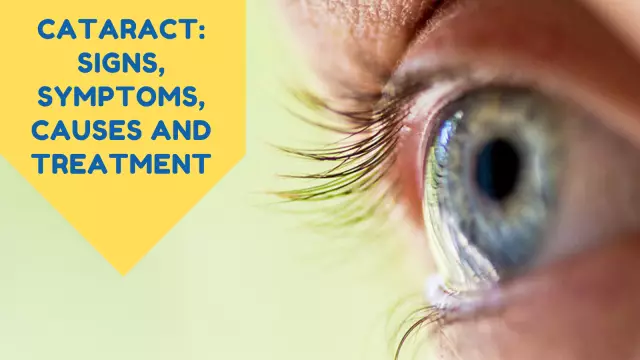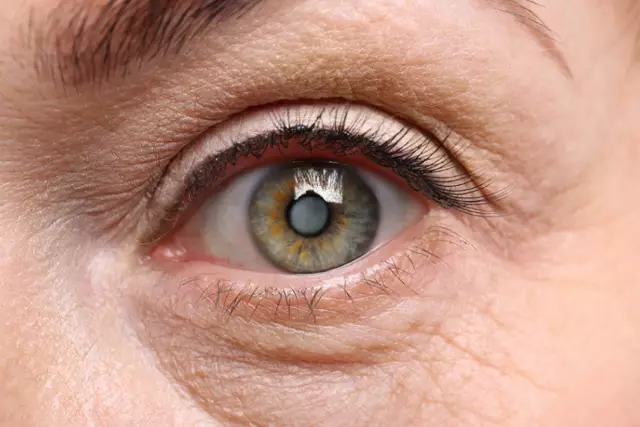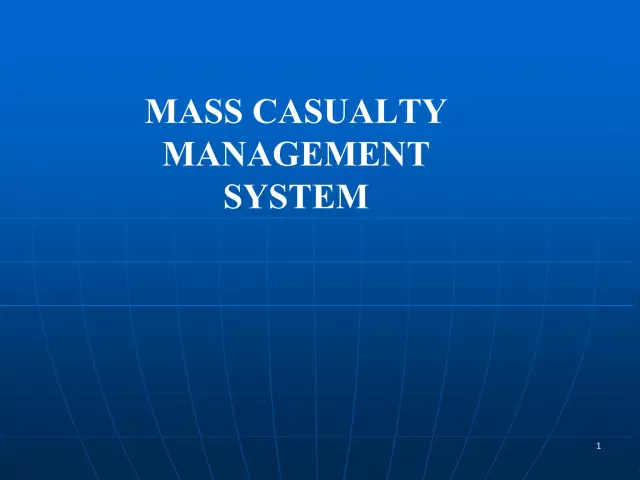- Author Rachel Wainwright [email protected].
- Public 2023-12-15 07:39.
- Last modified 2025-11-02 20:14.
Cataract: Causes, Symptoms and Treatment Methods
A condition in which patients have a clouded lens is called a cataract. In 90% of cases, the disease is diagnosed in older patients and is a consequence of the natural aging process of the body. Lens clouding cannot be prevented, it is irreversible and constantly progressive. The only effective method of cataract treatment is the removal of the cloudy lens and implantation of an intraocular lens. If cataracts are left untreated, vision is constantly deteriorating up to the perception of light

Why does cataract appear?
The lens of a healthy eye has a transparent structure to allow light rays to travel unhindered to the retina during visual function. When the lens begins to cloudy, vision deteriorates, since not all light rays reach the retina and the visual image is blurred. An eye with a cataract sees the image as if through a veil of fog.
The lens consists of a transparent protein compound, which begins to grow cloudy when metabolic processes in the body are disrupted and natural aging occurs. This process is irreversible, therefore it is important for all patients to understand that there are no drops that could return transparency to the lens. The maturation process of a cataract can be compared to the denaturation of the egg white, which becomes white and dense when heat treated. There is no reverse denaturation process.
Cataracts can develop due to various reasons:
- age-related changes and the natural aging process;
- the consequences of injury and exposure to toxic substances;
- radiation exposure;
- congenital lens pathology.
Diabetes mellitus, metabolic disorders, eye diseases, lack of vitamins and unfavorable environmental conditions increase the risk of developing cataracts.
Disease symptoms
A characteristic visible symptom of cataract is a change in pupil color from grayish to milky white. A ripe cataract is easy to recognize on your own, even without special equipment, but at this stage of maturation, the patient practically sees nothing. To carry out timely treatment and prevent loss of vision, it is worth paying attention to the first symptoms of the disease and contacting the clinic in the early stages of cataract maturation.
Signs of cataract development are:
- sensitivity to bright light sources;
- Difficulty focusing vision while doing manual work or reading
- inability to choose optical means of vision correction;
- color perception is weakened, the brightness of objects is lost;
- visual acuity in low light deteriorates;
- objects before the eyes are distorted and doubled.
The development of cataracts associated with age-related changes can begin at different times, as it depends on the individual characteristics of the organism and the general state of human health. Very often, the first symptoms occur in patients of working age, so you should not wait for the full maturation of the cataract and lose your sight. It is better to perform the operation when the cataract is immature in order to remain active, able to work and freely enjoy life after 50 years.

How is cataract treatment carried out at MGK
Cataract is a progressive disease that, if left untreated, leads to blindness. To diagnose cataracts in the early stages of maturation, it is important to regularly visit an ophthalmology clinic for eye biomicroscopy. Also, during the examination at the Moscow Eye Clinic https://mgkl.ru, the ophthalmologist checks visual acuity, examines the fundus, checks the level of intraocular pressure and examines the visual field. The ophthalmologist seeks an individual approach to each patient in order to take into account the state of the patient's visual system, anticipate all possible risks and choose the optimal treatment method.
A detailed examination before cataract removal is required to correctly select an intraocular lens, which will be used for implantation instead of a clouded natural lens. Modern IOLs used in PCA are made of flexible biocompatible material and can have different optical properties for correcting vision at one or more focal lengths. Thus, undergoing cataract surgery, the patient gets the opportunity to correct his vision and get rid of glasses.

An ophthalmic surgeon performs an operation to remove the lens on an outpatient basis under local drip anesthesia. The operation is performed using the phacoemulsification method through a small incision in the cornea. Under the influence of ultrasound, the tissue of the lens is softened, crushed and removed. The IOL is implanted into the cleaned capsule bag through the existing opening in a rolled form. Inside the eye, it straightens and takes the desired position. No seams are applied. After the tissues have healed, you can return to your usual activity. Reading, walking and watching TV are allowed immediately after surgery.
Found a mistake in the text? Select it and press Ctrl + Enter.






